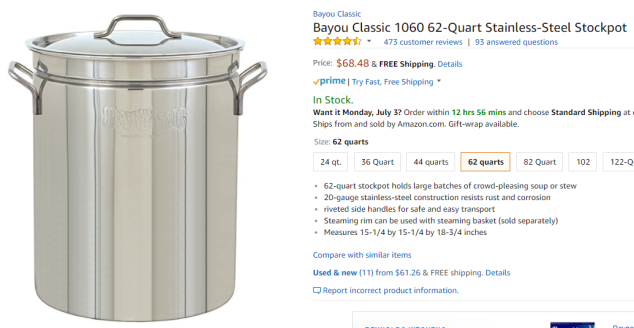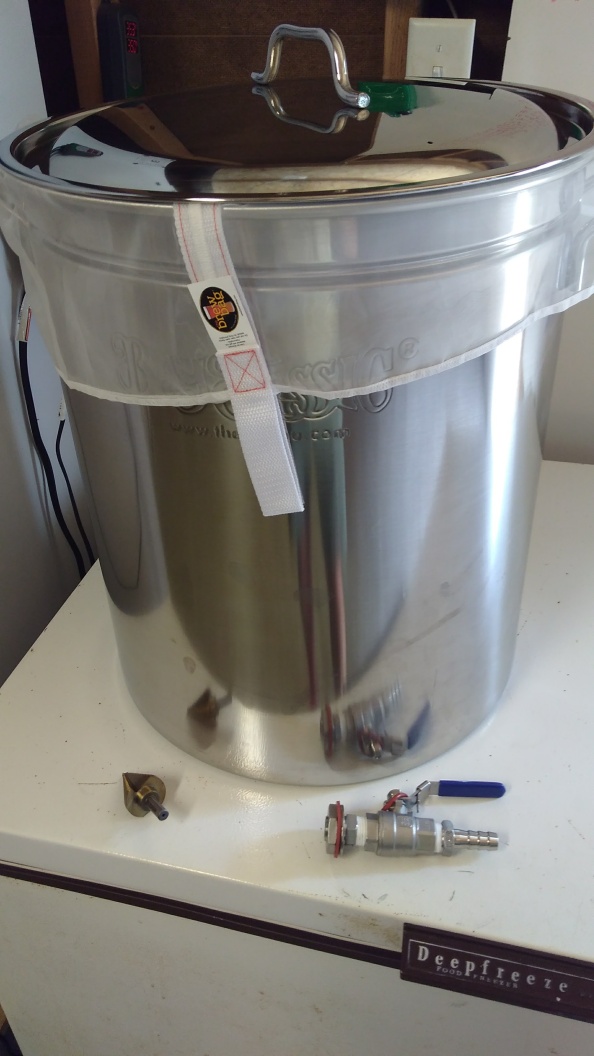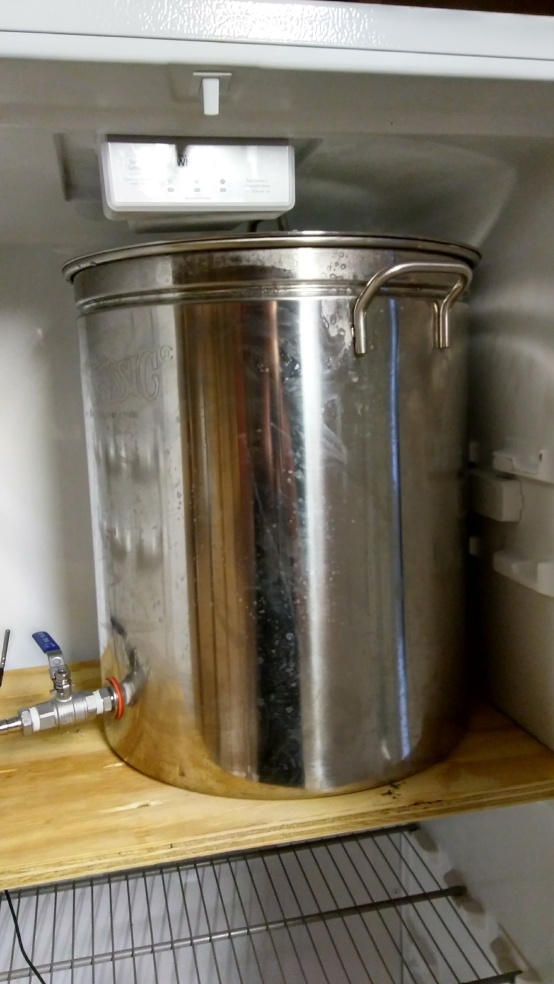So Zymurgy paid me money to write an article about One Pot Brewing. I decided to spend some of that money on…you guessed it.
With jealous eyes, I’ve touted the benefits of using an aluminum pot, rather than the standard stainless steel that homebrewers seem to love and adore. Aluminum is lighter, it gets to a boil faster, and it’s cheaper. Except check this out!

So I bought it, along with the other necessary attachments:

Super big pot, fitted Brew Bag, Stainless spigot (or whatever those are called), step bit, and cutting lube, and–roughly $150 bucks later–a new and improved One Pot Brewing system was born. Although an airlock would be easy to add, I don’t see the point.
Where to put the hole for the spigot? This was something I learned from the aluminum pot set up. I decided to place the hold a little bit higher, 2 1/4 inches from the bottom, giving a solid 2 inches for gunk. I didn’t want to bother with hop sacks, or tilting the pot. This should give me plenty of room. Plus, for low hopped smaller gravity beers, I plan on doing 10 gallon batches. It’s better to place the spigot conservatively; after all, while transferring, you can always tilt the pot towards you, in order to get all the beer you can.
Cutting the hole with lube was fairly simple, even for me. youtube it.
Only problem: it barely fits in the freezer. I might have to do some cutting of plastic or something.




